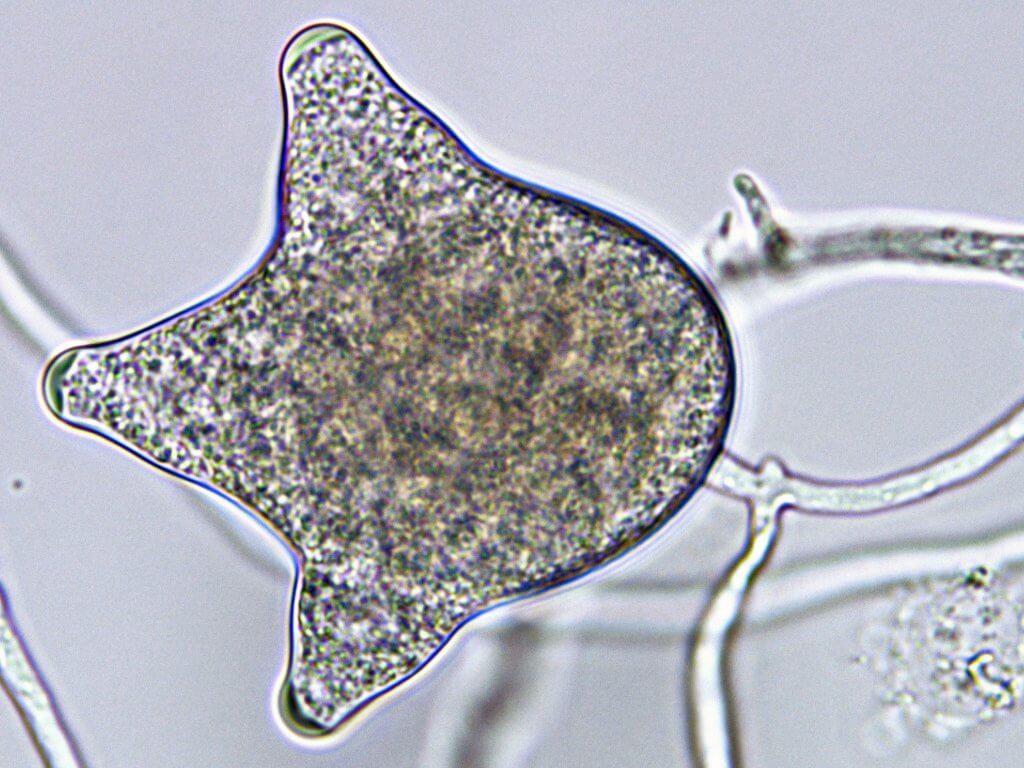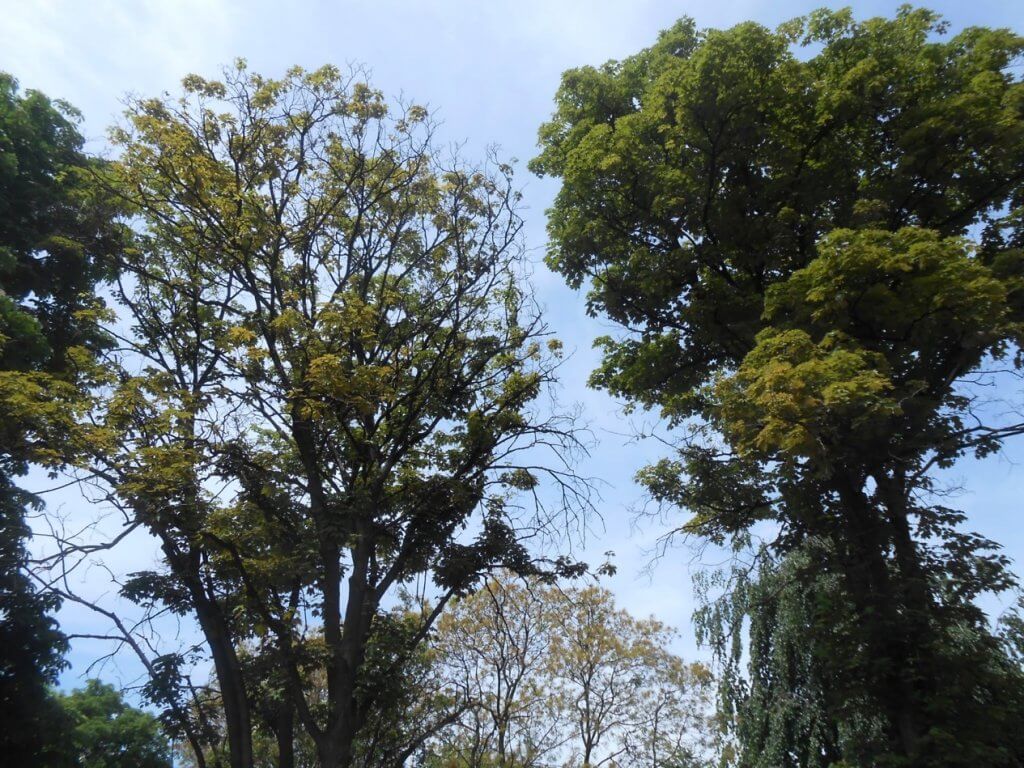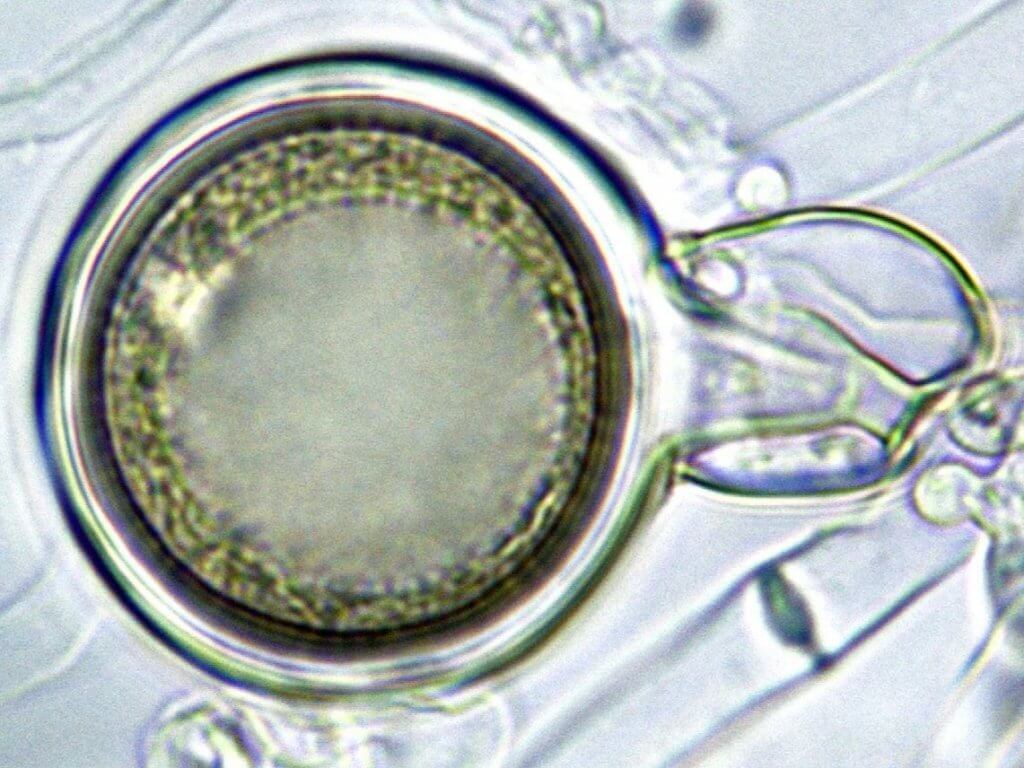An international scientific team led by Thomas Jung has discovered and described more than forty previously unknown species of pathogens from the genus Phytophthora which parasitize the root systems of trees. These findings are the results of a six-year project by the Phytophthora Research Centre at FFWT MENDELU. The previously unknown species were found in south-eastern Europe, south-eastern and eastern Asia, and South America. They originated primarily from natural ecosystems, but also partially from forest nurseries and planted forests. The study has significantly contributed to the understanding of tree pathogen diversity. The results will be utilized by institutions involved in plant protection and monitoring harmful organisms.
Phytophthora, also known as water moulds from the genus Phytophthora, are soil microorganisms that are very difficult to identify: “Unlike fungi, they do not produce fruiting bodies, so they are not conspicuous. We only recognize that a tree has been attacked by a Phytophthora on the basis of the tree’s condition. An infected tree dries out and unusual necroses form on the trunk,” explained Michal Tomšovský, one of the study’s co-authors, describing the problematic pathogens.
Dormant spores pose a significant risk to tree health. They can survive long-term in the soil, waiting for their opportunity: “Originally, they are soil and water organisms, so they thrive in heavy rain or flooding as they prefer wet conditions. Run-off allows the further spread of spores in waterlogged soil, and waterlogged trees are additionally stressed, their roots suffocate due to a lack of air, providing further opportunity for parasite attack,” said Tomšovský, describing the ideal conditions for the spread of Phytophthora mould.
The pathogens are identified from the soil and infected trees using a molecular biological method known as DNA sequencing: “This sequencing is similar to the system known to the public from the Covid-19 pandemic. DNA sequencing is important when there is suspicion of a serious pathogen. It is an accurate method where scientists or plant doctors can relatively quickly determine the cause of damage to trees. However, the problem lies with plant material from exotic countries where the biodiversity of these organisms is not well known. Sequencing results then reveal sequences which experts cannot classify and do not know what to expect from the captured organisms. This is why studies of this type are so important,” Tomšovský emphasized the study’s significance.



The authors of the study see a risk in the inadequately controlled import of potentially contaminated material, which can spread in public greenery and private gardens. Plant health legislation focuses only on controlling a few quarantine harmful organisms, and Phytophthora pathogens are practically not among them: “A fundamental problem is the import of planting material into Europe from other continents. Organisms that are not native arrive here and can cause significant damage to the root systems of native trees. We have already recorded such cases in Central Europe,” the scientist explained.
During the research, scientists conducted expeditions to third countries and analysed several hundred soil isolates. Each obtained Phytophthora isolate was subjected to DNA sequencing, and if it was a species previously unknown to science, it was thoroughly examined under a microscope and described as a new species.
The discovery of more than forty new species of the genus Phytophthora is considered by scientists as evidence of how little is known about these pathogens causing severe plant diseases. Therefore, they consider further research of natural ecosystems in unexplored areas of the world essential.
The study, which provides valuable findings for pathogen detection, will be utilized by the professional plant health community, especially by the Central Institute for Supervising and Testing in Agriculture in the Czech Republic.
The study results were published in the prestigious scientific journal Studies in Mycology.
Contact for further information: Prof. RNDr. Michal Tomšovský, Ph.D., Department of Forest Conservation and Wildlife Management, FFWT MENDELU, +420 545 134 115, michal.tomsovsky@mendelu.cz
More news
-
Mendel University in Brno is the main coordinator of an international project focused on the protection and conservation of narrow-leaved ash (Fraxinus angustifolia), a key tree species in the floodplain forests of Central and Southern Europe.…29. 12. 2025
-
MENDELU coordinates activities for biodiversity conservation and sustainable…
The Faculty of AgriSciences and the Faculty of Forestry and Wood Technology at MENDELU are coordinating an international project in the Amazon that contributes to biodiversity conservation, sustainable management, and improving quality of life.…16. 12. 2025 -
CZELO celebrates 20 years of supporting Czech science and education in Europe
For two decades, the Czech Liaison Office for Education and Research in Brussels (CZELO) has been supporting Czech institutions, researchers, and students in engaging with European programmes in education, science, and innovation. At the…9. 10. 2025 -
Scientific expedition in Mongolia: new butterfly discoveries and warning signs…
Experts from Mendel University, in collaboration with colleagues from other scientific institutions, conducted biodiversity mapping during a three-week summer stay in Mongolia, focusing on the southwestern part of the country, the Gobi Altai region…28. 8. 2025 -
Coffee cultivation has a poor future due to climate change, agroforestry system…
Globally, coffee provides a livelihood for 125 million people. But forecasting models show that its cultivation has a poor future due to climate change. Sites suitable for growing Coffea arabica are predicted to decline dramatically. In that case,…4. 8. 2025 -
A new publication on biodiversity of the floodplain landscape in the…
Ecological Changes and Biodiversity of the Floodplain Landscape in the Morava–Dyje Confluence Area is the title of a book that will be published in the second half of 2025. It is the result of the work of a broad spectrum of experts specializing in…28. 7. 2025 -
EuAsiaN-ROOT Project Unveils Collaborative Research on Tree-Root-Mycorrhizal…
The Horizon Europe project, Eurasian Network for Collaborative Research on Tree-Root-Mycorrhizal-Pathogen Interactions in Forest Soils (EuAsiaN-ROOT), coordinated by the Faculty of Forestry and Wood Technology, aims to provide a deeper…24. 6. 2025 -
Five Female Wolves Fitted with GPS Collars in the Beskydy and Javorníky…
Researchers from the Faculty of Forestry and Wood Technology at Mendel University in Brno have successfully captured and fitted GPS telemetry collars on five female wolves in the Beskydy and Javorníky Mountains over the past two years. These…28. 5. 2025 -
FFWT launches unique data collection on forest ecosystem functioning in MENDELU…
The Department of Forest Ecology at the Faculty of Forestry and Wood Technology of Mendel University in Brno (FFWT MENDELU), in cooperation with the Masaryk Forest Training Enterprise at Křtiny (ŠLP Křtiny), has launched monitoring of selected…23. 5. 2025 -
Professor Vladimír Tesař on the 30th anniversary of Pro Silva Bohemica: focus…
The Faculty of Forestry and Wood Technology and other stakeholders commemorated the thirtieth anniversary of Pro Silva Bohemica, an association of foresters dedicated to promoting close-to-nature forest management. Professor Emeritus Vladimír Tesař…9. 5. 2025